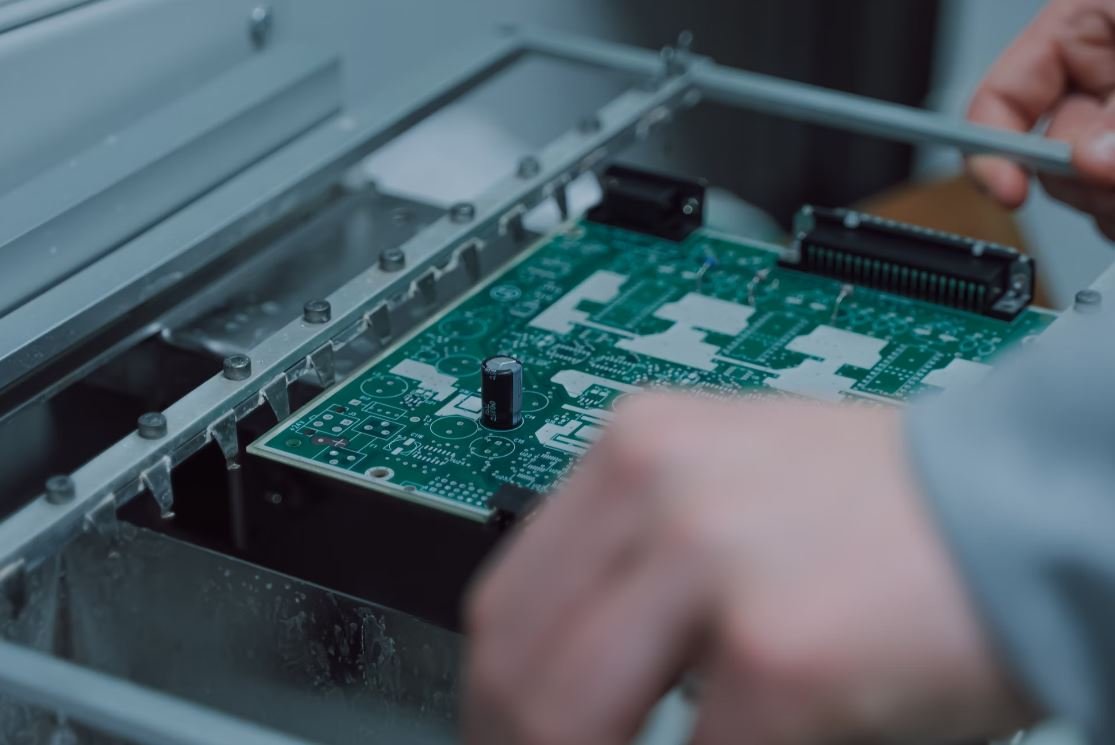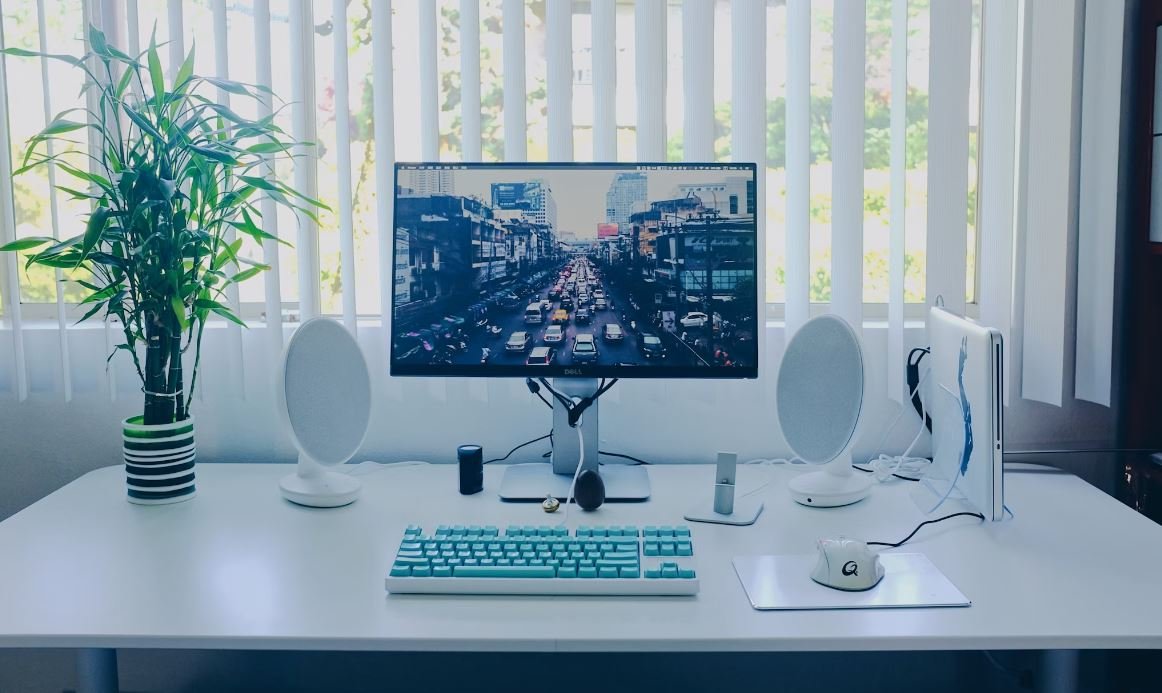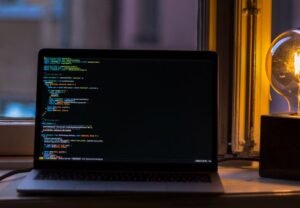Deepfake Examples
The rise of artificial intelligence (AI) technology has given birth to a new phenomenon known as deepfake, which involves the creation of highly realistic but fake videos or audios that can manipulate and impersonate individuals. Deepfake technology has raised concerns about the potential for misinformation, identity theft, and erosion of trust in digital media. To better understand the implications, let’s explore some notable deepfake examples:
Example 1: Deepfake in Politics
In recent years, **deepfake technology has been used to create videos that manipulate political figures**. For instance, a deepfake video showed former US President Barack Obama delivering a speech on a topic he never actually addressed. *This technology puts the authenticity of political speeches into question and raises concerns about the potential to influence public opinion through false narratives.*
Example 2: Deepfake in Entertainment
Deepfake technology has also been utilized in the entertainment industry to create **videos of celebrities in compromising situations or performing unreal actions**. Stars like Tom Cruise have become victims of deepfake videos that convincingly mimic their appearances and actions. *The viral nature of these videos can cause significant harm to an individual’s reputation and can be challenging to identify as deepfakes.*
Key Takeaways
- Deepfake technology enables the creation of highly convincing fake videos and audios.
- Politicians and celebrities are common targets of deepfakes.
- Deepfakes have the potential to influence public opinion and damage individuals’ reputations.
- It can be challenging to differentiate between real videos and deepfakes.
Example 3: Deepfake in Cybersecurity
**Deepfake technology poses significant threats to cybersecurity**. Cybercriminals can use deepfake audios to impersonate individuals and gain unauthorized access to sensitive information. By using AI-generated voices, attackers can sound like someone trusted, making it harder to identify fraudulent activities. *This makes it crucial for individuals and organizations to adopt robust security measures to protect against deepfake-driven cybercrimes.*
Example 4: Deepfake in Journalism
The rise of deepfake technology has added another layer of complexity to journalism, with the potential for **fake news articles being accompanied by realistic deepfake videos**. Misinformation campaigns can be amplified through deepfake content, eroding public trust in media. *Journalists and news organizations must be vigilant in verifying the authenticity of digital content before sharing it with the public.*
Example 5: Deepfake in Fraud
Criminals have started using deepfake technology for fraudulent activities. **Impersonating someone’s voice in phone conversations, scammers are able to deceive individuals and extract sensitive information**. This can lead to identity theft, financial loss, and damage to personal and professional relationships. *Awareness and caution are crucial in protecting oneself from falling victim to deepfake-based fraud schemes.*
Key Takeaways
- Deepfakes pose cybersecurity risks and can be used for fraudulent activities.
- Journalists need to be cautious about verifying the authenticity of digital content.
- Deepfake technology can be leveraged to deceive individuals and extract sensitive information.
Deepfake Examples: Data Comparison
| Industry | Impact |
|---|---|
| Politics | Misinformation and erosion of trust |
| Entertainment | Reputation damage and public manipulation |
| Cybersecurity | Identity theft and cybercrime |
| Journalism | Misinformation campaign and media distrust |
| Fraud | Financial loss and personal harm |
Conclusion
The proliferation of deepfake technology poses significant challenges in various aspects of society, from politics and entertainment to cybersecurity and journalism. It is crucial for individuals, organizations, and policymakers to stay vigilant, raise awareness, and develop robust technological solutions to curb the potential negative impacts of deepfakes. By fostering a critical mindset and actively verifying the authenticity of digital content, we can mitigate the risks associated with deepfake technology.

Common Misconceptions
Misconception 1: Deepfakes are only used for entertainment purposes
One common myth about deepfakes is that they are solely created for entertainment and humorous purposes. While it is true that deepfakes have gained notoriety for being used in viral videos and memes, their potential applications extend well beyond entertainment.
- Deepfakes can be used in identity theft, enabling bad actors to impersonate others online.
- They can be employed to create false evidence in legal proceedings, leading to potential miscarriages of justice.
- Deepfakes have been utilized in political contexts to spread disinformation and manipulate public opinions.
Misconception 2: Deepfakes are always easily recognizable
Another misconception is that it’s always apparent when an image or video has been deepfaked. However, deepfake technology has evolved rapidly, and it’s becoming increasingly difficult to distinguish between real and fake media.
- Advanced deepfake algorithms can now replicate intricate facial expressions and movements, making it harder to identify inaccuracies.
- Deepfakes can incorporate sophisticated audio manipulation, creating convincing voice imitations that add to the overall realism of the content.
- With deepfake technology becoming more accessible, amateur deepfakes are emerging, presenting a challenge to average users who lack technical expertise in detecting them.
Misconception 3: Deepfakes are mainly used maliciously
While deepfakes are often associated with malicious intent, such as spreading misinformation or discrediting individuals, not all deepfakes are harmful or malevolent in nature.
- Deepfake technology has potential positive applications, such as in the film industry, where it could be used to revive deceased actors or create unique visual effects.
- Deepfakes can also be used in educational contexts, allowing students to interact with virtual historical figures or providing realistic simulations for training purposes.
- Researchers are exploring the use of deepfakes in medicine to improve surgical training or simulate patient scenarios for medical professionals.
Misconception 4: Deepfakes are illegal everywhere
Although deepfakes have raised significant concerns regarding their potential for misuse, they are not universally illegal across all jurisdictions. The legality of deepfakes varies from country to country and depends on the context and intent behind their creation and dissemination.
- Some countries have introduced laws specifically targeting deepfake technology, aiming to prohibit the creation and distribution of non-consensual deepfakes.
- However, the legal landscape surrounding deepfakes is still evolving, and many jurisdictions are grappling with the challenges of regulating this technology adequately.
- It is crucial for lawmakers to strike a delicate balance between protecting against harmful uses of deepfakes while preserving freedom of expression rights.
Misconception 5: Deepfakes are an unsolvable problem
Although the rise of deepfakes presents significant challenges, it is incorrect to assume that the problem is insurmountable. Researchers and tech companies are actively working on developing tools and techniques to detect and mitigate the impact of deepfakes.
- Machine learning algorithms are being trained to identify and flag potential deepfakes based on inconsistencies and anomalies within the media content.
- Cross-disciplinary collaborations are forming between computer scientists, psychologists, and media experts to enhance deepfake detection methods.
- Ongoing research aims to improve media literacy, empowering individuals to critically evaluate and verify the authenticity of media they encounter.

Deepfake Examples
Introduction
Deepfake technology has become increasingly sophisticated over the years, posing significant challenges in distinguishing real from fake. The following tables showcase some notable deepfake examples that have garnered attention in recent times, highlighting the importance of raising public awareness and implementing robust detection mechanisms.
Deepfake Examples in News
| Date | Context | Impact |
|---|---|---|
| August 2019 | Mark Zuckerberg manipulated speech | False statements attributed to Facebook CEO |
| October 2020 | Barrack Obama endorsing political candidate | Attempt to influence the election |
| November 2021 | Nicole Kidman in fictional interview | Rumors of controversial statements |
Deepfake Risks in Finance
| Date | Victim | Consequence |
|---|---|---|
| June 2020 | CEO of a major bank | Panic in the stock market, temporary crash |
| September 2021 | Financial analyst | Fake market predictions leading to massive losses |
| January 2022 | Investment firm manager | Trade decisions manipulated, significant losses incurred |
Deepfake Applications in Entertainment
| Date | Film/TV Production | Usage |
|---|---|---|
| March 2018 | Rogue One: A Star Wars Story | Resurrection of deceased actor |
| October 2019 | Gemini Man | Younger version of lead actor |
| May 2021 | The Mandalorian | Digital replacement of actress |
Fake News Propagation through Deepfakes
| Date | Platform | Consequences |
|---|---|---|
| July 2020 | Misinformation spread to millions | |
| December 2020 | YouTube | False narrative amplified, public misled |
| March 2021 | Political disinformation campaign |
Deepfake Impersonation Scandals
| Date | Person Impersonated | Repercussions |
|---|---|---|
| August 2018 | Celebrity A-listers | Damaged reputations and public trust |
| April 2020 | Politicians during campaigns | Deceptive messaging, confusion among voters |
| October 2021 | Corporate CEOs | Potential damage to corporate brand and stock value |
Deepfake Threats to National Security
| Date | Country/Agency Targeted | Concerns |
|---|---|---|
| June 2019 | U.S. Army | False orders issued, compromising military operations |
| February 2020 | Intelligence Agencies | Manipulated videos used for espionage and disinformation |
| December 2021 | United Nations | Deepfake speeches causing diplomatic tensions |
Legal and Ethical Challenges
| Date | Jurisdiction | Concerns |
|---|---|---|
| March 2020 | United States | Privacy violation and digital impersonation laws inadequate |
| July 2021 | European Union | Proposal for stricter regulations and penalties |
| November 2022 | Australia | Emerging legal framework to address deepfake issues |
Deepfake in Online Harassment
| Date | Victim | Effects |
|---|---|---|
| September 2018 | Popular social media influencer | Mental anguish, reputation tarnished |
| April 2021 | YouTuber | Personal safety threatened, stalking incidents |
| August 2022 | Journalist | False statements attributed, damage to professional credibility |
Deepfake Detection Technologies
| Date | Company/Product | Features |
|---|---|---|
| April 2020 | Microsoft Azure AI | Facial attribute analysis, voice recognition |
| September 2021 | Deeptrace | Deep learning algorithms, video tampering detection |
| March 2022 | Truepic | Blockchain-based tamper-proof image verification |
Conclusion
The increasing prevalence of deepfake technology raises concerns across various sectors, from political manipulation to financial fraud and online harassment. The tables presented above provide a glimpse into the wide-ranging impact of deepfakes in different domains. To combat these issues, there is a need for ongoing research and collaboration between technology developers, law enforcement agencies, and governments worldwide. Detecting and mitigating the risks associated with deepfakes is crucial to preserving trust and maintaining the integrity of our digital landscape.
Frequently Asked Questions
What are deepfake examples?
Deepfake examples refer to manipulated videos or images that use advanced artificial intelligence techniques to alter or replace the appearance of individuals in a way that is difficult to detect.
How are deepfake examples created?
Deepfake examples are created using machine learning algorithms, specifically generative adversarial networks (GANs). These algorithms are trained on large datasets of real images and videos to learn and mimic the visual characteristics of the target individuals.
What are some popular deepfake examples?
Some popular deepfake examples include videos that swap the faces of celebrities in movies or television shows, alter the facial expressions or lip movements of public figures during speeches or interviews, or even create entirely fictional scenarios involving well-known individuals.
What are the risks associated with deepfake examples?
Deepfake examples can be used for malicious purposes, such as spreading fake news, misinformation, or defamation. They can also be used for identity theft, blackmail, or compromising the privacy and reputation of individuals.
How can deepfake examples be detected?
Detecting deepfake examples can be challenging, but there are methods and tools being developed to identify potential manipulations. These include analyzing facial inconsistencies, artifacts, or anomalies that may appear in the videos or images, as well as using forensic techniques to examine metadata or traces left by the manipulations.
Are there any legitimate uses for deepfake examples?
While deepfake examples often raise concerns, there are also potential positive applications. For instance, they can be used in the entertainment industry for special effects or enhancing the realism of animations. Deepfakes can also assist in visualizing historical events or in educational settings to illustrate concepts.
What are the legal implications of using deepfake examples?
The legal implications of using deepfake examples vary across jurisdictions. In some countries, using deepfake technology to create and distribute non-consensual explicit content or to deceive others can be considered as criminal offenses, which may lead to civil or criminal charges.
How can individuals protect themselves from becoming victims of deepfake examples?
To protect themselves from becoming victims of deepfake examples, individuals can take several precautions. These include being cautious about sharing personal information or images online, using strong passwords, enabling two-factor authentication, regularly updating software and security patches, and being aware of the potential signs of manipulation in media content.
What measures are being taken to regulate or combat deepfake examples?
Many governments and organizations are actively working on initiatives to regulate or combat deepfake examples. These include proposing legislation to criminalize malicious use, investing in research and development of detection tools, promoting media literacy and awareness campaigns, and collaborating with technology companies to develop industry-wide guidelines and standards.




